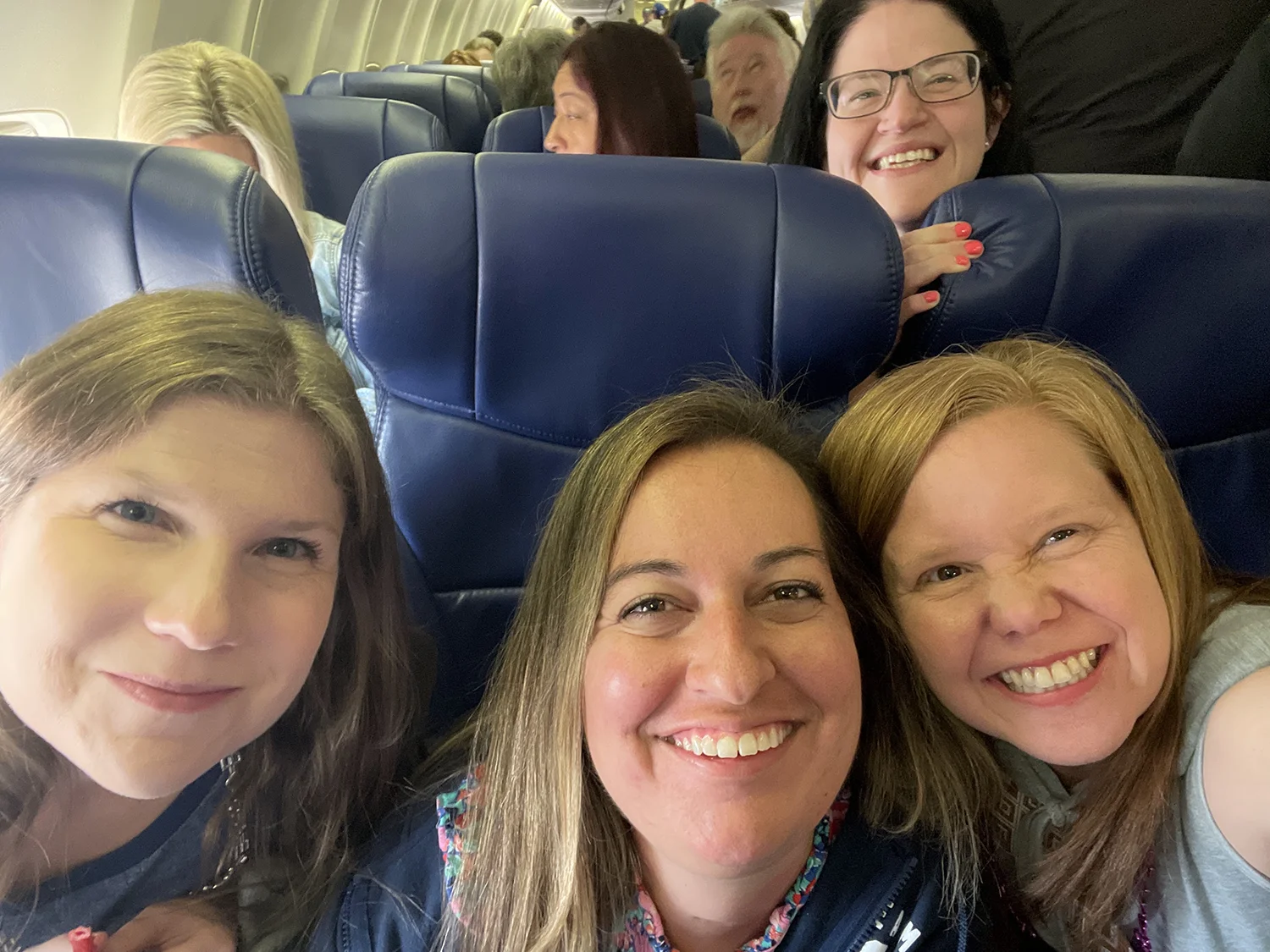I have been lucky enough to visit Sydney three different times — in 2011, 2020, and 2023. Each trip started with soccer, but I always carved out extra time to explore the city. What I’ve found is that Sydney is one of the most accessible places I’ve traveled in my power wheelchair. Between the ferries, smooth rolling routes, and genuinely friendly people, it’s a city that feels not just doable, but actually enjoyable to navigate.
This guide pulls together the highlights from all three trips — the best wheelchair accessible hotels, attractions, food, and practical tips to help you plan your own Sydney adventure.
Getting There & Around Sydney
Flying into Sydney
From the U.S., the trip to Sydney is a long haul. I usually fly Delta when flying international. From Indianapolis to Los Angeles it's about 5 hours, then it’s a 14.5-hour direct flight to Sydney. There’s only one flight a day, typically leaving LAX around 11pm.
For me, managing the restroom situation on such a long flight is the hardest part as a wheelchair user. To make it easier, I’ve sometimes broken the trip into two days — flying to LA, staying overnight at an airport hotel, and then flying the next day.
Whenever possible, I book Comfort+ for the extra space, and once or twice I got lucky with no one in the seat beside me. Having that extra room to stretch came in clutch on such a long journey.
While you’re still at the airport, it’s worth noting: Sydney Airport has the best accessible restroom I’ve ever used (see video below). It’s huge and thoughtfully designed, with an overhead hoist (you'll need your own sling), an adult changing bed that adjusts in height, and even a shower. For long-haul travelers, having access to that kind of facility makes a massive difference – especially after not being able to use the restroom for 15 hours!
Airport Transfers & Accessible Taxis
Sydney has accessible taxis with ramps, and we used them a few times to head back after extended stays. On one trip, I was even given some taxi vouchers from a friend — locals with disabilities receive monthly vouchers for 50% off fares. That’s not available to tourists, but if you happen to know someone local, you might get lucky like I did.
One of the best tips I can share is to get the direct number of a reliable accessible taxi driver. A friend gave me one, and it made early flights so much less stressful.
Public Transport
Sydney’s ferries are the real star here. All the major routes from Circular Quay are accessible, with big ramps and wide entryways. Crew members are trained to help if needed, and people with disabilities get priority boarding. The only thing to watch is that ramp angles can change with the tides, but I didn’t find it unmanageable. Many of the ferries have free wifi too which is nice if you don't want to use extra data.
The trains are also accessible, and I could roll straight on with no issues. Honestly, I love when cities get public transport right because it means we don’t have to rely on renting a car.
Where to Stay in Sydney
I’ve stayed in a few different areas of Sydney, and each has pros and cons depending on your plans.
Pier One Sydney Harbour
I think my favorite hotel was the Pier One Sydney Harbour, part of Marriott’s Autograph Collection. The hotel is in a perfect location — right under the Harbour Bridge and walking distance to Circular Quay, ferries, and The Rocks.
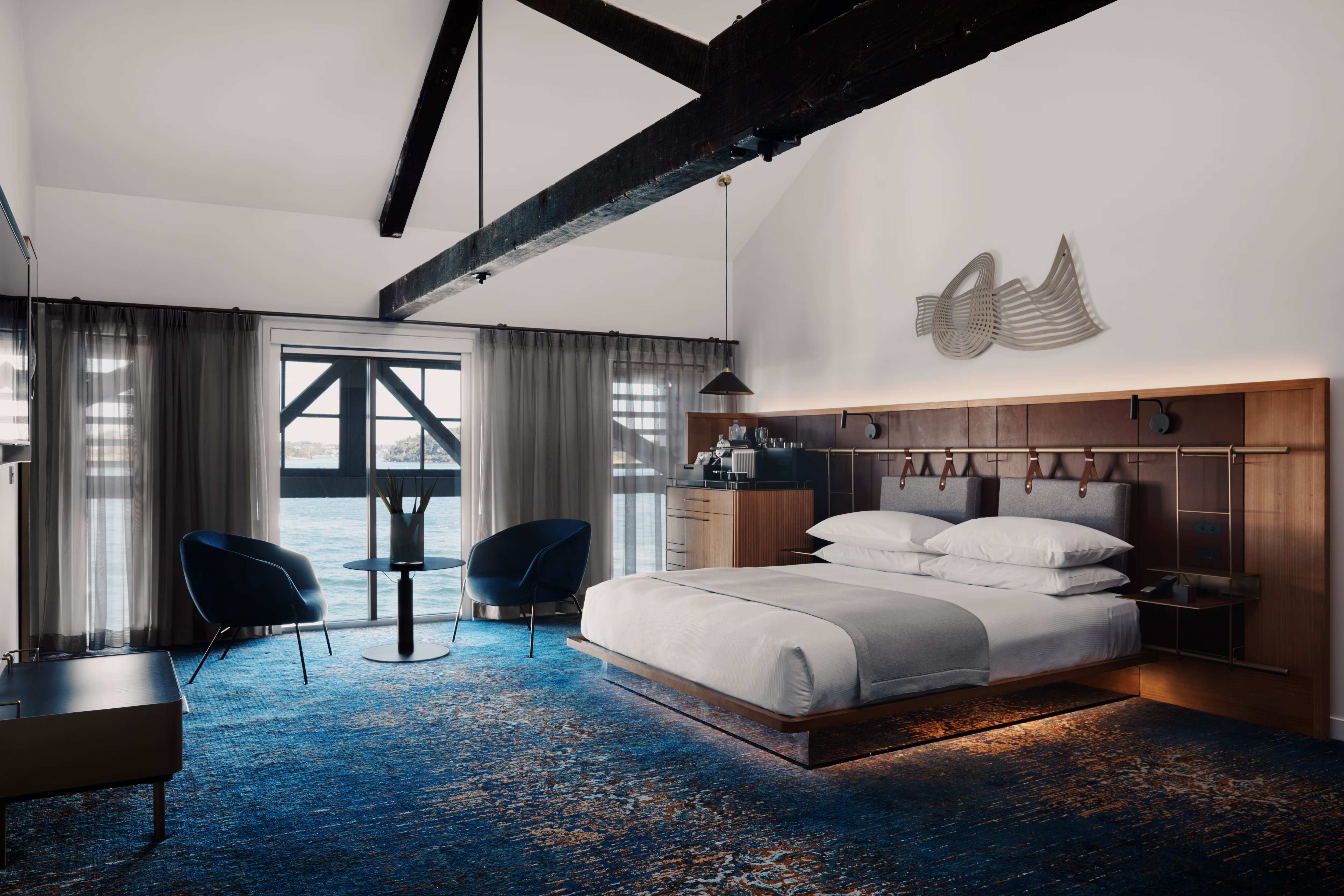
The building used to be a working warehouse on the wharf, so the rooms are huge compared to most city hotels. My room had a giant roll-in shower with a handheld wand and plenty of space to turn around.
Accessibility notes:
- The lobby has stairs, but there’s an elevator up a half floor.
- The waterside patio is step-free and beautiful, especially at night with string lights overhead.
- Breakfast isn’t included, but the on-site bar and restaurant have accessible seating areas (though the actual bar counter is high).
We booked this with Marriott Bonvoy points, which made it an even better deal.
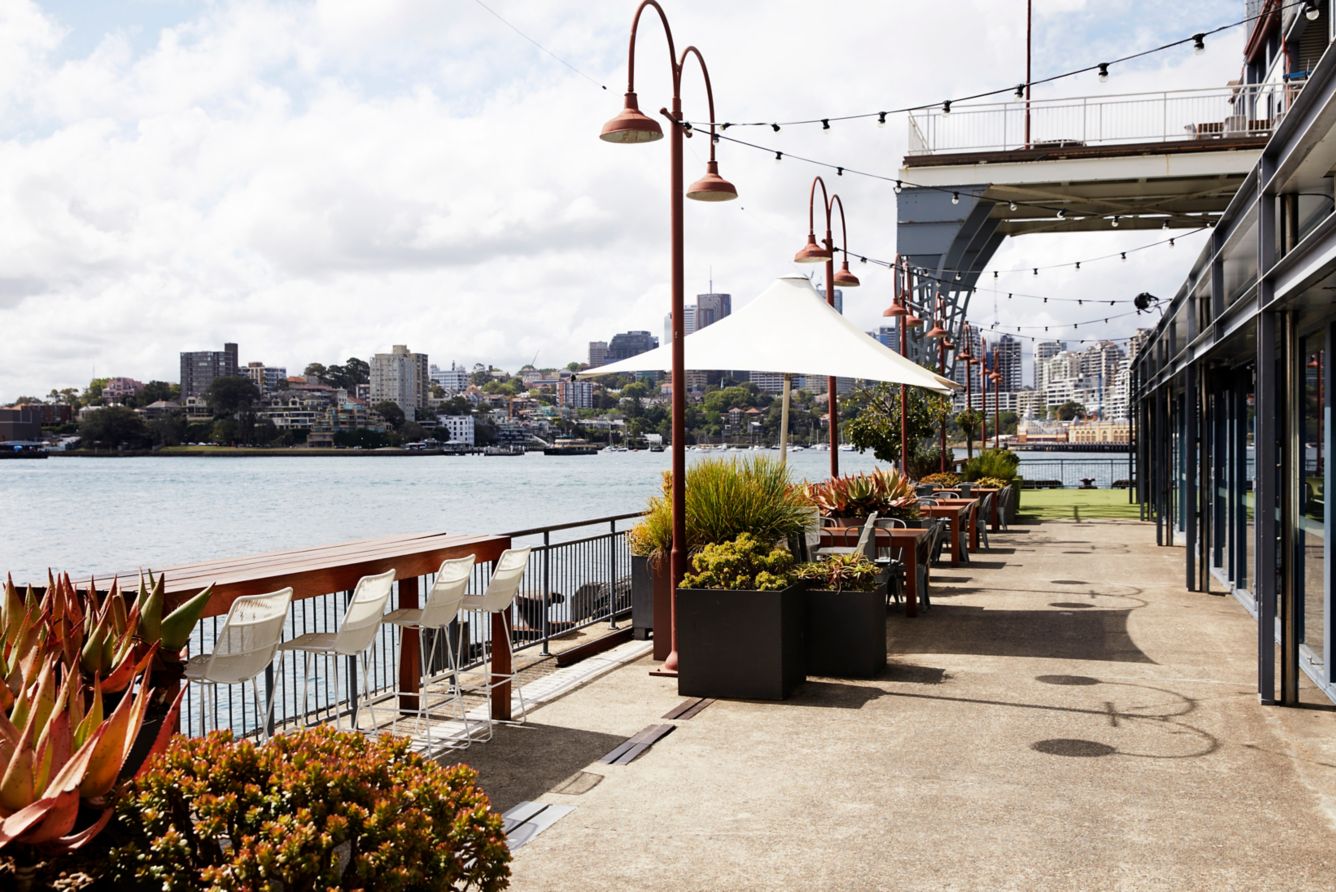
Moxy Sydney Airport
I also stayed at the Moxy Sydney Airport for one night. Like all Moxy hotels, it had a super fun and stylish lobby — I loved hanging out there. But the rooms are tiny. My mom and I shared a room with twin beds, and there wasn’t enough space for me to turn my chair around. For a one-night airport stay, it worked, but I wouldn’t recommend it for a longer trip.
Olympic Park: Pullman & Ibis Sydney Olympic Park
For soccer, I also stayed in the Olympic Park area at the Pullman Sydney Olympic Park and Novotel Sydney Olympic Park. They are across the street from each other. Both were comfortable and accessible, with restaurants and a train stop nearby.
The area itself is very walkable but can feel a little empty if there aren’t events happening. Still, I had fun exploring, and I even went to my first cricket game at Engie Stadium. For some reason, we all wore buckets on our heads — I’m still not sure why, but it was a hilarious experience.
Top Wheelchair Accessible Things to Do in Sydney
Sydney Opera House & Opera Bar
I didn’t get to do the Opera House tour because tickets were sold out during my free time, but their website confirms the entire venue is accessible. Even if you don’t go inside, the outside area is worth a visit. One of my favorite memories is having drinks at Opera Bar, right on the water, with live music in the background and the Opera House lit up at night.
Circular Quay & The Rocks
Circular Quay is the hub for Sydney’s ferries, so I spent a lot of time rolling through here. The routes are smooth, curb cuts are plentiful, and there are accessible restrooms right across from Wharf 6.
Beyond being practical, it’s just a fun area to hang out. Circular Quay is lined with shops, cafes, and restaurants, making it a great place to grab a meal or pick up souvenirs. It’s also one of the liveliest parts of Sydney — there are often street performers along the waterfront, from musicians to dancers, and it’s easy to spend an hour just people-watching with the Opera House in the background.
Just a short roll away is The Rocks, one of Sydney’s oldest neighborhoods. It’s a fascinating mix of cobblestone charm and modern culture. Here you’ll find heritage pubs, boutique shops, markets, and some of the city’s best casual dining. The Rocks Markets (open on weekends) are especially fun for browsing local crafts and artisan goods, though they can get crowded. Accessibility is good overall, with smooth routes and ramps, but some older buildings and pubs do still have steps at the entrance — something to be mindful of.
Together, Circular Quay and The Rocks give you the best of Sydney’s energy: bustling, historic, and scenic, all in one very rollable area.
Sydney Ferries (A Must-Do)
The ferries are honestly one of the best parts of visiting Sydney. I used them to get to Taronga Zoo and Manly Beach. The boats are large, the ramps are wide, and once you’re on board, you can choose indoor or outdoor seating.
Pro tip: the ferries are one of the best ways to get stunning photos and videos of the Opera House from the water. I always made sure to grab an outside seat for the views.
Taronga Zoo
Taronga is a classic zoo experience, with the bonus of amazing views of Sydney Harbour. It’s accessible overall, though some paths are steep — be sure your chair is fully charged before you go.

The zoo has kangaroos (a must-see if you’re in Australia), and if you visit on your birthday, entry is only $1. I paid for the koala encounter, not realizing that in New South Wales it’s illegal to touch them. Basically, I sat near a tree while the koala hung out high up on a branch. Not exactly the close-up I imagined, and I wouldn’t recommend paying extra for it. If holding a koala is on your bucket list, you’ll need to head to Queensland.

WILD LIFE Sydney Zoo & SEA LIFE Aquarium
If you want something smaller and more central, the WILD LIFE Sydney Zoo and SEA LIFE Aquarium are side by side in Darling Harbour. Both are very accessible, and I bought the two-attraction pass for a discount.
I’m obsessed with quokkas, so my sole purpose for visiting this zoo was to see one in real life. Can you blame me? They're adorable. Unfortunately for me, Davey the quokka was hiding from the heat that day. I was super bummed, but the koalas here made up for it. I tried the koala experience here and they were much closer more active than at Taronga, and one even tried climbing onto my chair before the zookeeper gently stopped her.
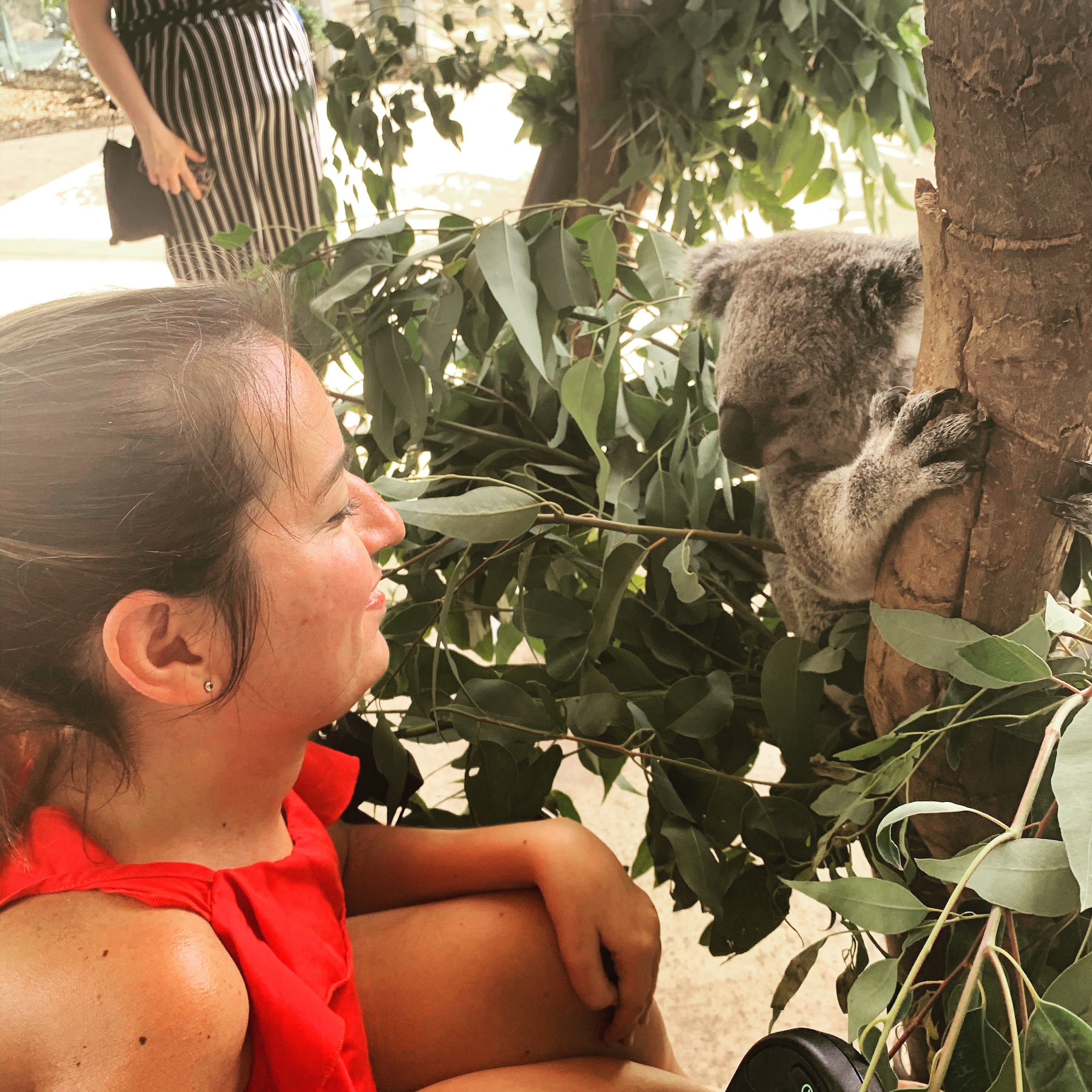
The SEA LIFE Aquarium is also impressive, with huge tanks and walkways that are wide and smooth. Buying tickets online in advance is cheaper and saves you from waiting in line.
Royal Botanic Garden
This free garden sits right next to the Opera House and has 74 acres of walking paths, shady trees, and open lawns. It’s a peaceful spot to roll through, and the views of the harbour are incredible. I loved taking my time here after busier days of sightseeing.

Manly Beach
The ferry to Manly drops you off in a small harbor area with shops and restaurants. At first, I wasn’t sure why it was so hyped, but then I rolled down the Corso — a pedestrian promenade — and it opened up into the stunning Manly Beach on the Pacific Ocean.
The promenade along the beach is wide and smooth, perfect for rolling. There are plenty of cafes and shops, and I loved stopping for ice cream before browsing the boutiques. Best of all, beach wheelchairs are available for free here, making it possible to actually get onto the sand.
Food & Coffee
- Bennelong Bennie’s Café – Right by the Opera House, with excellent hot chocolate.
- ARIA Sydney – A fine dining restaurant near Circular Quay, step-free entry.
- Hugos Manly – Waterfront dining near the ferry wharf.
- Bluewater Cafe– Casual spot along the promenade with good accessibility.
Practical Tips for Wheelchair Users in Sydney
Power Needs: Australia uses 230V, compared to 120V in the U.S. You’ll need a voltage converter (step-down transformer) for your wheelchair charger. It’s heavy but essential. Most phone and laptop chargers work fine with just an adapter — but always check the label before plugging in.
Weather: Since Australia is in the Southern Hemisphere, their seasons are opposite of ours in the United States. Sydney has similar weather to Southeastern United States. Think South Carolina.
Budget: Sydney is fairly expensive, and costs can sneak up on you quickly. Attractions, meals, and taxis all add up fast — so plan accordingly. Keep in mind you’re in one of the largest cities in Australia, and like most big global cities, prices rise in central areas.Here’s where you’ll feel it most:
- Attractions: Zoos, aquariums, and museums often cost $40–60 AUD each. Buying multi-attraction passes online in advance can save you money.
- Food & Drink: Even casual meals run $20–30 AUD per person, and coffee is usually around $5 AUD. Splurging at places like ARIA is worth it, but mix in more casual dining to balance costs.
- Transportation: Ferries are affordable, but accessible taxis are pricey — especially for airport transfers or long distances.
- Hotels: Staying near Circular Quay is convenient but expensive. Using hotel points (like we did at Pier One) is one way to save.
Pro tip: balance your splurges with free and low-cost experiences like the Royal Botanic Garden, Circular Quay street performers, or just rolling along the waterfront at sunset.
Restrooms: Use the National Public Toilet Map, which lets you filter for accessible restrooms and even shows pictures for some locations. It also gives useful information regarding door widths in some locations. Definitely a handy website to have!
Safety & Comfort
Australians are some of the friendliest people I’ve ever met — I always felt safe rolling around, even at night.

The one thing to watch out for: traffic direction. A few times I looked the wrong way before crossing and nearly rolled into oncoming cars. Thankfully, Sydney has “Look Right” painted at many crossings to remind you.
Conclusion
Sydney is one of the most wheelchair-friendly cities I’ve visited. Between the ferries, public transport, wide promenades, and genuinely welcoming people, it’s a destination I’d recommend to any power wheelchair traveler.
Every time I’ve gone, I’ve explored a little more — and each trip has only made me want to come back again.
Psst, FYI – this post may contain affiliate links, which means I earn a small commission (at absolutely no extra cost to you). This helps keep Roamable running and supports more accessible travel guides like this!
Just a reminder: I'm sharing my personal experience as a wheelchair user, and accessibility can change. Always confirm details directly with venues before visiting. Thanks for supporting accessible travel! ✨
